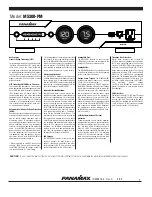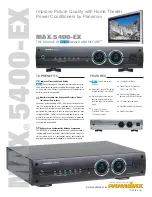
48
Trap Port
: The Trap Port is the port where asynchronous traps from the Smart Tracker will be received. The SNMP
manager will receive traps from the Smart Tracker at this port when they occur. Traps are listed in the
MIB file, which will be discussed later in this user manual. The default is Port 162.
Trap IP Address
: Trap IP Address is the SNMP server’s IP address; where the Smart Tracker’s SNMP Traps will be
sent and received. Network operators typically designate one server as the SNMP manager to re-
ceive all Traps from networked devices. This is blank by default and must be filled out in order for
SNMP trap messages to be received.
Access Type
: Access Type allows the user to select either “Read” or “Read/Write” capabilities over SNMP. These
correspond to GET and SET commands received by the Smart Tracker from the user’s network man-
agement software or MIB browser. “Read” is selected by default.
Enable v3
: The following textboxes and dropdown lists are used for SNMPv3 authentication and security. This ver-
sion can provide encrypted messages and two-level password protection to enhance the security of each
Smart Tracker. V3 is not enabled by default and must be enabled by the user. For more information regard-
ing v3, refer to RFC3414 from the IETF.
Username
: The Username field is used to enter a new user name. This field is used by both the Smart Tracker and the
SNMP manager and must match in both to allow encryption/decryption of messages.
Auth Type
: The user can select from two Authentication protocol types, MD5 and SHA. Both types are used to en-
crypt messages between the Smart Tracker and the SNMP manager. Either may be selected. Contact
your network administrator for information regarding which type may be required.





































